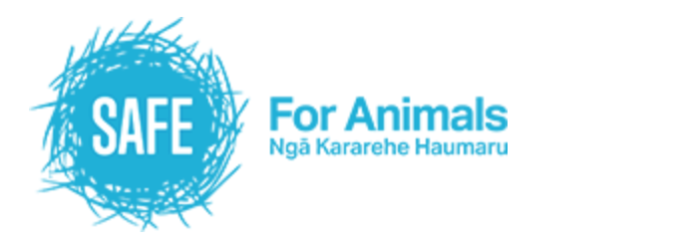Members of the public are outraged to learn that cows farmed on Epsom’s Cornwall Park have been sold to live animal exporters.
Cornwall Park was gifted to the Cornwall Park Trust Board in 1901 by Sir John Logan Campbell, who wished the park would be used for the general benefit of the public, “affording them recreation, enjoyment, pleasure and instruction and other similar benefits and advantages of that nature.”
SAFE CEO Debra Ashton said Aucklanders would be shocked to learn that their park was being used to raise animals for the controversial live export trade.
“Does the Cornwall Park Trust Board know for certain the conditions that they’re sending their cows in to?” asked Ashton. “They’ll face a long, rough journey in cramped, disgusting conditions before arriving at a country with high elevations and cold, dry conditions. This is a far different fate from their upbringings in Cornwall Park.”
“Those gentle cows that Aucklanders will be familiar with, will eventually be slaughtered in their destination country, potentially by means too cruel to be legal in Aotearoa.”
For nearly two years, the Ministry for Primary Industries has been reviewing the controversial live export trade. During that time the live export ship Gulf Livestock 1 capsized and sank off the coast of China. The tragedy saw 5,867 New Zealand cows drown and 41 crew members, including two New Zealanders, lost at sea.
“Cows are at risk at sea, and they’re at risk in their destination country. The animal welfare laws and regulations we have in New Zealand don’t exist in the countries we export animals to.”
“The Cornwall Park Trust Board must reconsider their decision and stop any future plans to sell more animals to live exporters.”
SAFE is New Zealand’s leading animal rights organisation.
We’re creating a future that ensures the rights of animals are respected. Our core work empowers society to make kinder choices for ourselves, animals and our planet.
– The Government has been reviewing the live export trade since June 2019. Agriculture Minister Hon Damien O’Connor has expressed his preference for a conditional ban on cattle exports. In October 2020 Prime Minister Rt Hon Jacinda Ardern admitted to having “significant concerns” about live export.
– Footage of a live export ship loading cows at PrimePort Timaru.
– Recent analysis from The Guardian has found that live export ships are twice as likely to be lost at sea as cargo vessels.
– Thousands of cows have been stranded at sea for over two months in the Mediterranean following an outbreak of the viral disease bluetongue on two live export ships. Both ships have been refused entry at multiple ports. Spanish officials now say over 800 cows on the ships must be slaughtered.
– Last year, the live export ship Gulf Livestock 1 capsized and sank off the coast of China. The tragedy saw 5,867 New Zealand cows drown, and 41 crew members, including two New Zealanders, were lost at sea.
– In 2003, Saudi Arabia rejected a shipment of over 57,000 Australian and New Zealand sheep on board the MV Cormo Express on alleged disease grounds and refused to unload them. After two months at sea and the ship being unable to find a port, around 6,000 of the sheep died on board. Following this disaster, the New Zealand Government suspended the export of live sheep for slaughter. In 2007, a conditional prohibition on the export of livestock (cattle, sheep, deer and goats) was introduced.
– Under the Animal Welfare (Export of Livestock for Slaughter) Regulations 2016, live animals cannot be exported for slaughter without the approval of the Director-General of the Ministry for Primary Industries. Approval may only be granted if the Director-General considers that the risks to New Zealand’s trade reputation can be adequately managed. There have been no livestock exports for slaughter since 2008.
– Animals exported for breeding purposes and their young will still eventually be slaughtered, potentially by methods that would not be legal in New Zealand.






I cannot understand why it is necessary for the export of live cattle when there is an easy alternative.
My wife’s uncle in North West China has a total of twenty five New Zealand bred dairy cows.
Female embryos were sent from New Zealand and surgically implanted into the wombs of Chinese cows.
There was no need to send animals in cramped, dangerous and stressful conditions by sea, road and rail.
It must be much more expensive and labourious than just sending a sealed vacuum flask and paying an AI technician to implant them into your cows.
For that matter Chinese farmers can buy semen from New Zealand Dairy bulls. It must be a lot easier than having a living, breathing bull shipped to you, fed and cared for, to do what he happily does back here.
So can anyone tell me why it is necessary to send live cattle at all?
Incidentially Uncle Zhang loves New Zealand milking machinery and equipment too. He may only have a small herd but he milks three times a day and it saves him a great deal of time which he can spend listening to opera and drinking with his niece’s husband.
Comments are closed.